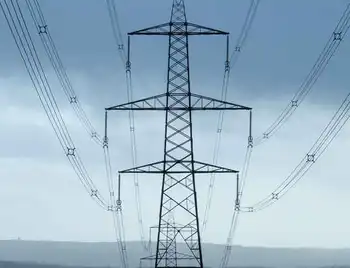Despite rising costs, TVA says nuclear plants economical
By Associated Press
NFPA 70e Training - Arc Flash
Our customized live online or in‑person group training can be delivered to your staff at your location.

- Live Online
- 6 hours Instructor-led
- Group Training Available
The federal utility says in its latest filing to the Nuclear Regulatory Commission that industry estimates for the two Westinghouse AP-1000 pressurized water reactors planned for the site near Scottsboro, Ala., range from $9.8 billion to $17.5 billion. That's compared to estimates of $6.4 billion to $7.1 billion a year ago.
Still, TVA President Tom Kilgore says nuclear power has its advantages, particularly over coal-fired power plants facing tougher air pollution standards.
"Everybody's costs are going up," Kilgore said. "But it's still economical. If you take into account the fact that we also see carbon (pollution) costs in some form, we think it's very prudent to keep looking at our next nuclear options."
However, anti-nuclear activist Louise Gorenflo, a member of the Bellefonte Efficiency and Sustainability Team, says the type of plant TVA is proposing has never been built in the United States and that the prototype in Finland "has doubled in cost because of cost overruns and delays."
Gorenflo contends TVA has "tried to minimize" the costs of these plants, while "the projected price tag just keeps going up."
TVA's Watts Bar Unit 1 near Spring City, Tenn., was the last nuclear power generator completed by a U.S. utility. It cost nearly $7 billion in 1996. TVA's two other plants, the twin-reactor Sequoyah station near Chattanooga and the three-reactor Browns Ferry plant near Athens, Ala., were completed in the 1970s at far lower costs.
TVA is working with a consortium of utilities and engineering companies known as NuStart Energy LLC on the AP-1000 reactor construction and operating license at Bellefonte. Kilgore said TVA ultimately could build the plant itself or share ownership with other companies.
The TVA board will likely be asked next year to continue funding the application process, Kilgore said.
Meanwhile, TVA is spending $2.5 billion to complete a second reactor at the Watts Bar station by 2012 and devoting $10 million to study completing two other reactors TVA virtually abandoned at the Bellefonte site 20 years ago.
Knoxville-based TVA says it needs the additional capacity to meet growing demand. TVA services about 8.8 million consumers in Tennessee, Alabama, Mississippi, Kentucky, Georgia, North Carolina and Virginia.
"We've got to keep looking at this," TVA Chairman Bill Sansom said of new nuclear power. "I personally think it is a great source of energy, especially to help us become more energy independent."
TVA generates about 60 percent of its power from coal, about 30 percent from nuclear and 10 percent from hydroelectric. Less than 1 percent comes from renewable sources, such as wind, solar and methane gas.











